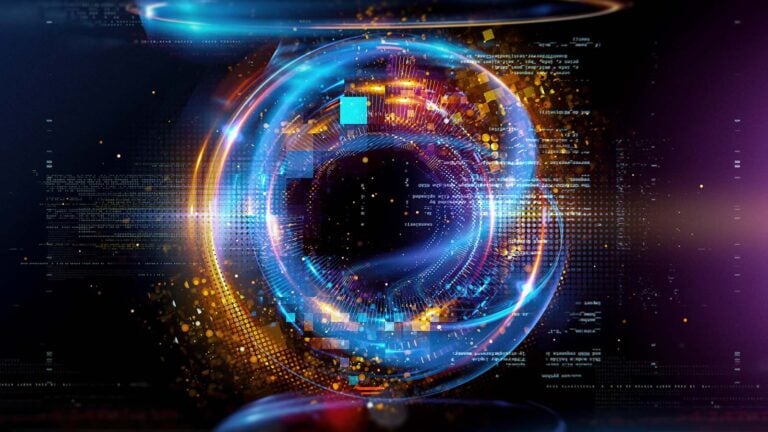Right now, artificial intelligence is all the rage in the market. This is understandable, of course, since AI is set to change the world as we know it.
For example…
- AI is revolutionizing healthcare by assisting doctors in diagnosing diseases and helping pharmaceutical companies develop new treatments.
- AI chatbots and virtual assistants handle customer inquiries and provide support 24/7, improving customer satisfaction and reducing response times.
- AI-generated media is upending our notions of creativity and inspiring new forms of expression.
The list goes on…
And right before our eyes, companies like NVIDIA Corporation (NVDA), which makes the chips necessary for companies looking to implement generative AI, are making money hand over fist, enriching investors in the process.
The companies that were (and still are) enabling the hardware side of AI are Phase 1 of the AI Revolution.
But I am here to tell you that we are now entering Phase 2, and it’s all thanks to quantum computing.
So, today, I’ll explain what this emerging technology is, and how it will supercharge artificial intelligence. And then, I’ll share the kinds of companies that should soar during Phase 2 of this AI Revolution, as well as what could happen to those who don’t prepare for Phase 2 now.
From Bits to Quidbits
Right now, computers as we know them today operate on a binary system. They are equipped with chips that use bits to perform computations.
The bits are limited, though, and can only show a value of zero or one. So, it takes a lot of zeros and ones arranged in specific orders for a computer to do anything.
To understand what I’m talking about, let’s think about a maze. A classic computer will run a simulation by choosing a path. When it hits a dead end in the maze, it will start all over again. It will repeat this process again and again until it finds the solution.
Quantum computing changes the game, though. These computers operate with subatomic particles such as electrons or photons. Quantum bits (qubits) allow the particles to exist simultaneously in more than one state, which increases processing speeds.

Source: CBInsights
Going back to our maze analogy, a quantum computer will test all paths of the maze simultaneously, giving you the correct answer in a fraction of the time.
Why is that important? Quicker processing speeds mean that computers can tackle more complex problems, which will improve predictive analytics, pattern recognition and complex optimization tasks.
The implications here are hard to understate. While classical computers have made tremendous gains over the decades, with quantum computing we’re talking about a complete paradigm shift. You can throw Moore’s Law – which states that the number of transistors on a microchip (and, in turn, computing power) doubles approximately every two years – out the window.
Up until recently, building a quantum computer was prohibitively expensive. They were overwhelmingly complex and massive, and they needed to be kept in stable laboratory conditions, and cooled to nearly absolute zero (-459 degrees Fahrenheit).
In other words, they were confined to academic research labs and a few well-heeled tech companies.
But thanks to a single piece of technology called an ion trapper, that’s all about to change…
Made of a composite group of highly specialized materials including silicon, quartz and sapphire, an ion trapper uses electrically charged atoms to store and manipulate qubits. (A qubit, by the way, is the quantum version of the classic binary bit.)
What’s important to know is that this approach promises to take quantum computing out of the physics lab.
We’re talking about the first ever commercially viable quantum computer. It will potentially be:
- Able to operate at room temperature,
- A fraction of the size of traditional quantum computers,
- Stable enough to operate in any environment,
- And as simple to use as any laptop.
The Dark Side of Quantum Computing
The tech stocks that led the charge over the past 20-plus years are about to be upended by small, innovative companies developing and leveraging quantum computing.
While I expect quantum computing to boost select companies and create new investment opportunities, there will be a destructive phase of AI as well. And, unfortunately, dark days are coming for those who fail to prepare now. Virtually every stock will be impacted by the new AI development in the coming weeks and months.
To help investors prepare and make sure AI doesn’t destroy folks’ life savings, I am sitting down with InvestorPlace analysts Eric Fry and Luke Lango for an emergency roundtable discussion about what’s about to happen.
Together, we’ll reveal the immediate steps you need to take if you want to save yourself from the destruction that’s about to unfold, while also having the chance to make 10 times your money or more as the AI revolution enters Phase 2.
We will reveal our AI briefing on Friday, July 26, at 7 a.m. Eastern time. Stay tuned for more details!
Sincerely,

Louis Navellier
Editor, Market 360
The Editor hereby discloses that as of the date of this email, the Editor, directly or indirectly, owns the following securities that are the subject of the commentary, analysis, opinions, advice, or recommendations in, or which are otherwise mentioned in, the essay set forth below:
NVIDIA Corporation (NVDA)

